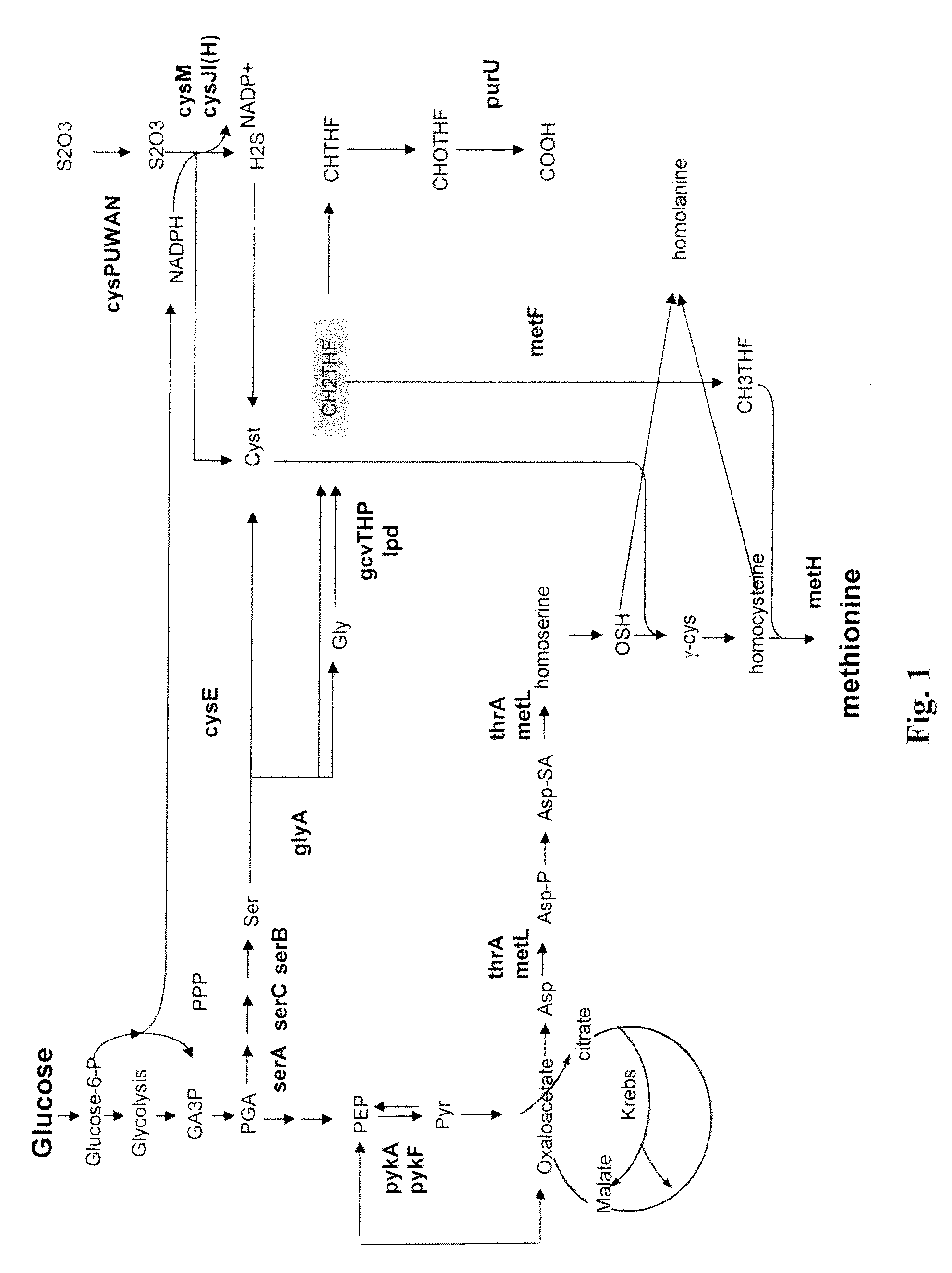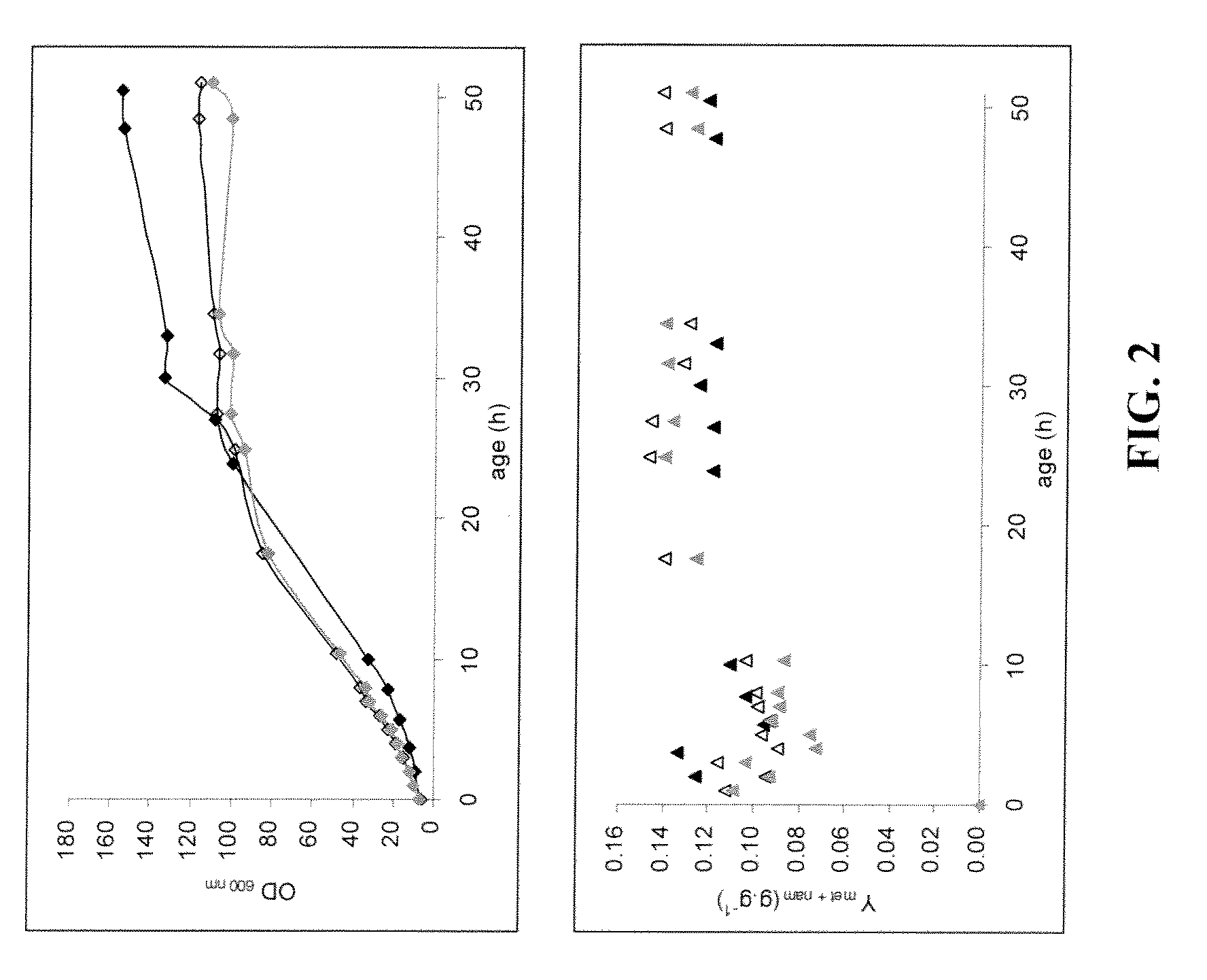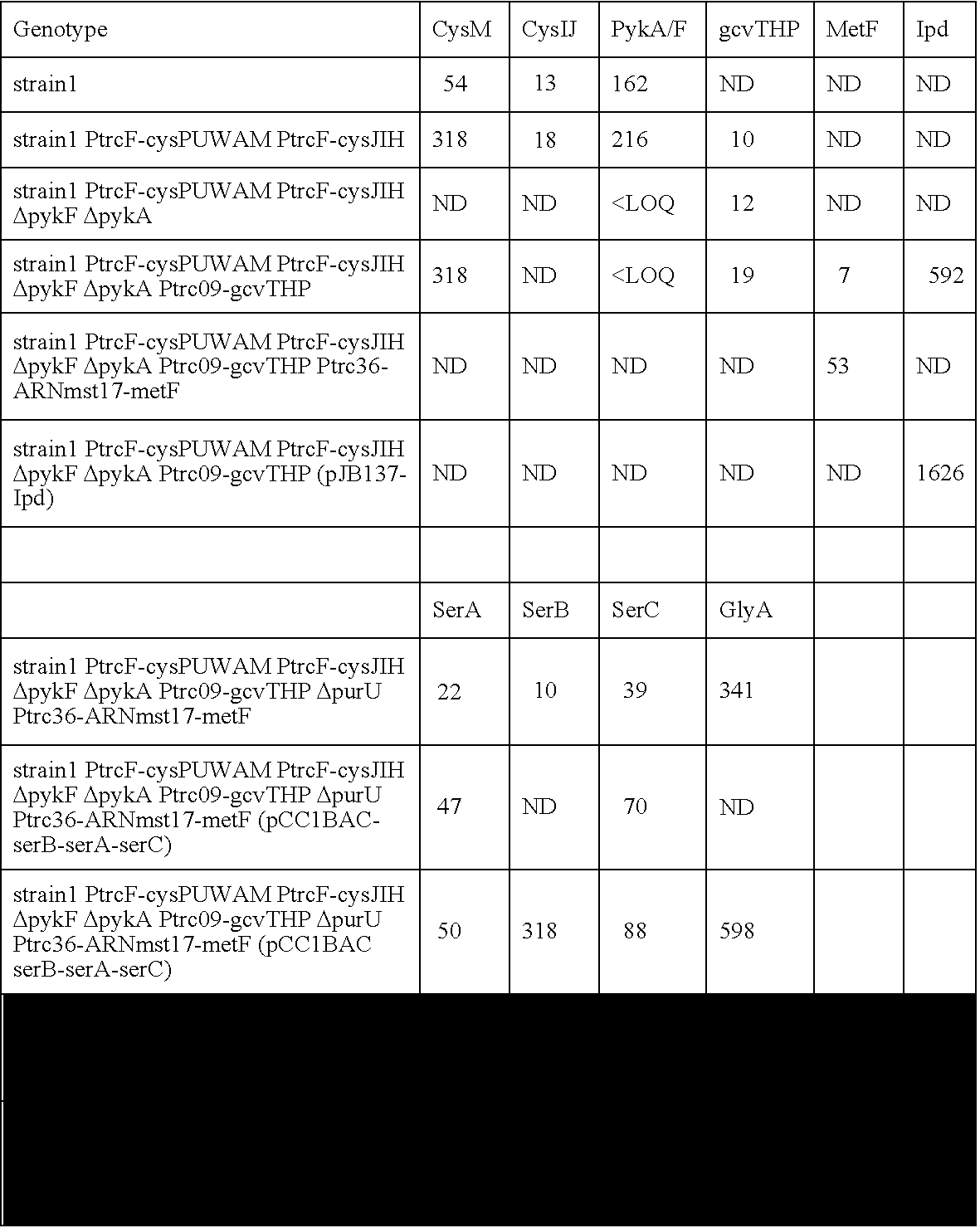Increasing methionine yield
- Summary
- Abstract
- Description
- Claims
- Application Information
AI Technical Summary
Benefits of technology
Problems solved by technology
Method used
Image
Examples
Embodiment Construction
[0095]An E. coli strain in which the methioninoe repressor encoded by the metJ gene has been replaced by a chloramphenicol cassette (ΔmetJ::Cm) and that harbors a metA allele with reduced feed-back sensitivity to methionine and SAM (metA*11) has been described in PCT WO2005108561 filed on May 12, 2004. Overexpression of the genes metF and metH from artificial promoters integrated upstream of the structural genes into the chromosome (Ptrc-metF, Ptrc-metH) has been described in patent application WO 2007 / 077041. This document also describes the overexpression of an aspartokinase / homoserine dehydrogenase with reduced feed-back inhibition to threonine (thrA*) and the overexpression of serine acetyl-transferase (cysE) and the metA*11 from the plasmid pME101. A strain with all modifications described in the above patent applications, called strain1 in this application, has the genotype ΔmetJ metA*11 Ptrc-metH Ptrc-metF (pME101-thrA*1-cysE-PgapA-metA*11). All subsequent constructions descr...
PUM
 Login to View More
Login to View More Abstract
Description
Claims
Application Information
 Login to View More
Login to View More - R&D
- Intellectual Property
- Life Sciences
- Materials
- Tech Scout
- Unparalleled Data Quality
- Higher Quality Content
- 60% Fewer Hallucinations
Browse by: Latest US Patents, China's latest patents, Technical Efficacy Thesaurus, Application Domain, Technology Topic, Popular Technical Reports.
© 2025 PatSnap. All rights reserved.Legal|Privacy policy|Modern Slavery Act Transparency Statement|Sitemap|About US| Contact US: help@patsnap.com



